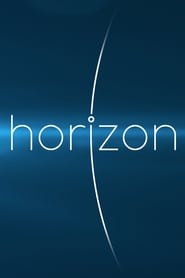
Is Wednesday red? Take part in our experiment to test whether your senses overlap. Do melodies have a colour? Take part in our experiment to test whether you hear colours. Imagine if every time you saw someone called Derek you got a strong taste of earwax in your mouth. It happens to James Wannerton, who runs a pub. Derek is one of his regulars. Another regular's name gives him the taste of wet nappies. For some puzzling reason, James's sense of sound and taste are intermingled. Dorothy Latham sees words as colours. Whenever she reads a black and white text, she sees each letter tinged in the shade of her own multi-coloured alphabet - even though she knows the reality of the text is black and white. Spoken words have an even stranger effect. She sees them, spelled out letter by letter, on a colourful ticker tape in front of her head. Both James and Dorothy have a mysterious condition called synaesthesia, in which their senses have become linked. For years scientists dismissed it, putting it in the same category as séances and spoon-bending. But now, synaesthesia is sparking a revolution in our understanding of the human mind. Two synaesthetes seldom agree on the colours or tastes they experience. While Covent Garden may taste of crinkly chocolate to James, it's very unlikely to have the same taste for another synaesthete. And Dorothy's brother Peter, also a synaesthete, won't see M or Z in the same colour as she does. But despite these differences, scientists are now beginning to discover more and more overarching synaesthetic patterns. Dorothy doesn't only see letters and numbers in colour. Music produces a riot of colour, too. As Dorothy hears notes going from low to high, her colours change from black and purple to mid-browns and then yellows and whites. Overall, lower notes evoke darker colours and higher notes brighter colours - and this pattern is true for most synaesthetes. But surprisingly, when non-synaesthetes are asked to match colours and music, they show a similar pattern. Most of us seem to associate low notes with darker colours and high notes with brighter colours. The evidence of the synaesthete in all of us doesn't end here. Another clue comes from the way we manipulate numbers. More than half of all synaesthetes who see coloured numbers also experience their numbers arranged in space around them. Heather Birt is such a synaesthete, and she's followed by a stream of numbers wherever she goes. Recently, scientists started to investigate how non-synaesthetes deal with numbers. They found they're better at manipulating small numbers with their left hand, and their bigger numbers with our right hand. This suggests that we all somehow think of numbers as arranged in space, even if we're not aware of it. More evidence, it seems, that we're all synaesthetic to some degree. It's just that some people experience a more exaggerated version. A few scientists believe that synaesthesia might even explain how we evolved two of the traits that define our species and have transformed our world - creativity and language. Many famous artists have been synaesthetes - the jazz legend Miles Davis, for instance, and the painter Kandinsky. In fact, a number of studies suggest that synaesthesia may be more common among artists, poets and musicians. This has led some scientists to argue that synaesthesia and creativity may share a similar basis - that both may be down to brain processes that involve linking two seemingly unrelated areas. Some believe that our common synaesthetic abilities may also have been the springboard to language. Connections between our senses of hearing and vision, for example, could have been an important initial step towards the creation of words. Our earliest ancestors may have first started to talk by using sounds that actually evoked the object they wished to describe. According to this theory, language could have emerged from the multitude of synaesthetic connections within our brains.